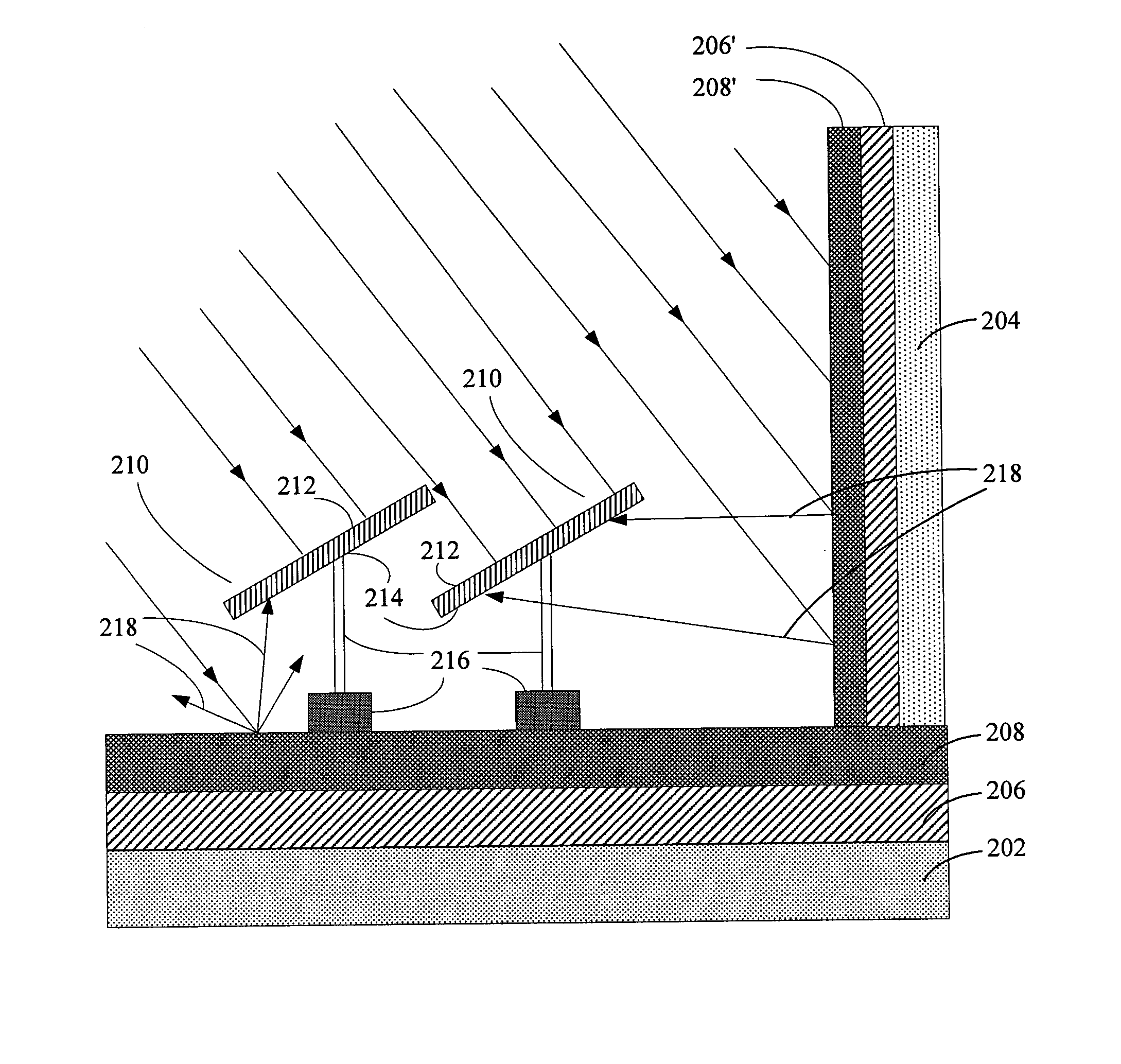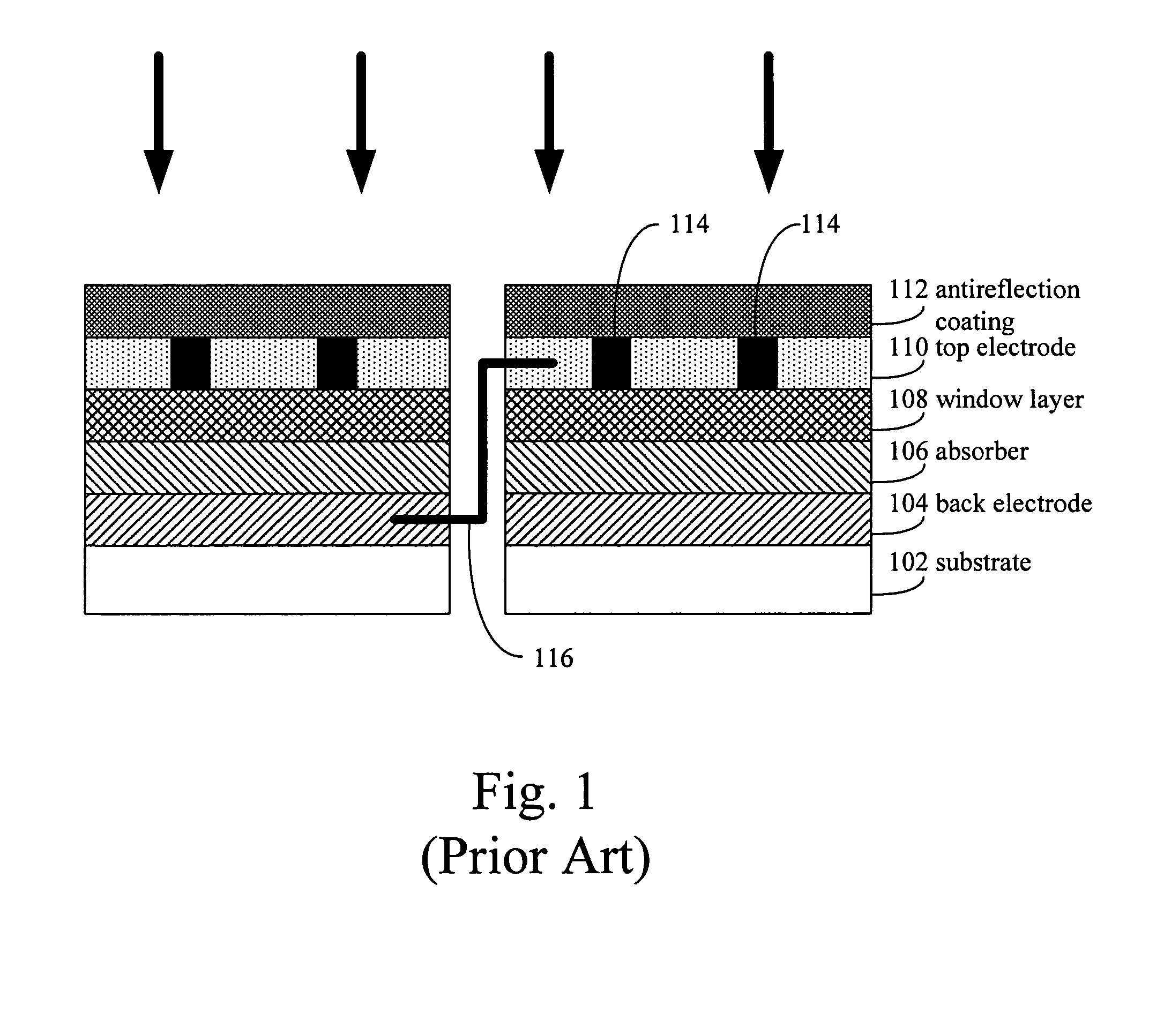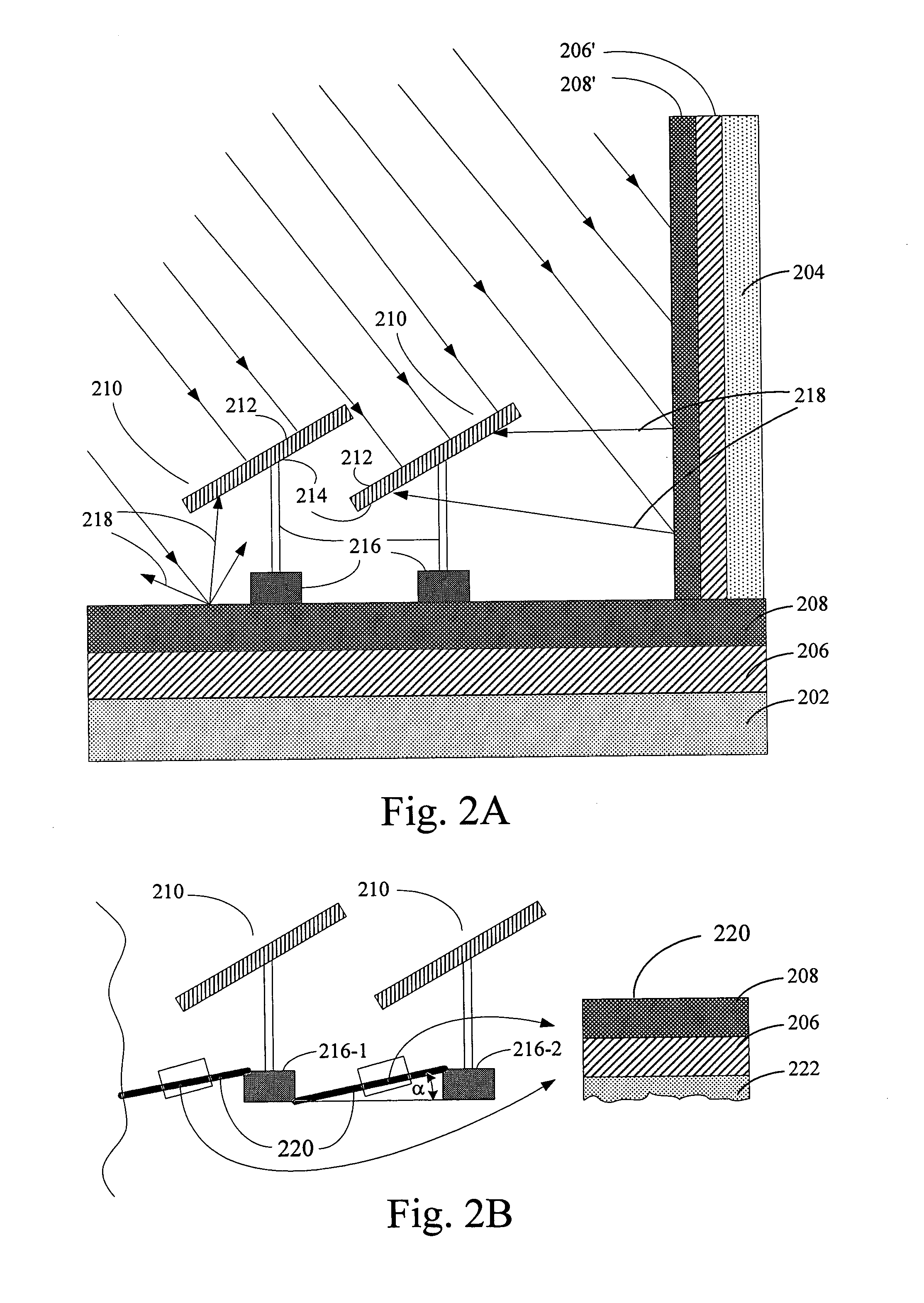Self-cleaning protective coatings for use with photovoltaic cells
a photovoltaic cell and self-cleaning technology, applied in the direction of metal/metal-oxide/metal-hydroxide catalysts, light radiation electric generators, physical/chemical process catalysts, etc., can solve the problems of reducing the efficiency of large planar photovoltaic cells, difficult to make semiconductor films, and crystalline silicon-based cells, so as to maintain the efficiency of photovoltaic cells, reduce cleaning and repainting efforts, and reduce the effect of labor
- Summary
- Abstract
- Description
- Claims
- Application Information
AI Technical Summary
Benefits of technology
Problems solved by technology
Method used
Image
Examples
Embodiment Construction
[0039] The present invention provides systems and materials to improve photovoltaic cell performance by implementing a self-cleaning function on photovoltaic cells and / or on albedo surfaces in the vicinity of photovoltaic cell assemblies. One aspect of the invention provides materials for protecting albedo surfaces that surround photovoltaic cell assemblies, thereby maximizing energy input into the photovoltaic cell assemblies. Another aspect of the invention provides materials for self-cleaning photovoltaic cell panels, thereby maintaining their efficiency. A third aspect of the present invention provides designs for portable albedo collecting devices that are associated with photovoltaic cell assemblies to optimize energy efficiency.
5.1 General Architecture
[0040] The present invention discloses systems and methods for improving existing photovoltaic cell assemblies that utilize albedo effects thereby improving their performance. As depicted in FIG. 2A, an albedo collector system...
PUM
| Property | Measurement | Unit |
|---|---|---|
| band gap | aaaaa | aaaaa |
| surface areas | aaaaa | aaaaa |
| thickness | aaaaa | aaaaa |
Abstract
Description
Claims
Application Information
 Login to View More
Login to View More - R&D
- Intellectual Property
- Life Sciences
- Materials
- Tech Scout
- Unparalleled Data Quality
- Higher Quality Content
- 60% Fewer Hallucinations
Browse by: Latest US Patents, China's latest patents, Technical Efficacy Thesaurus, Application Domain, Technology Topic, Popular Technical Reports.
© 2025 PatSnap. All rights reserved.Legal|Privacy policy|Modern Slavery Act Transparency Statement|Sitemap|About US| Contact US: help@patsnap.com



